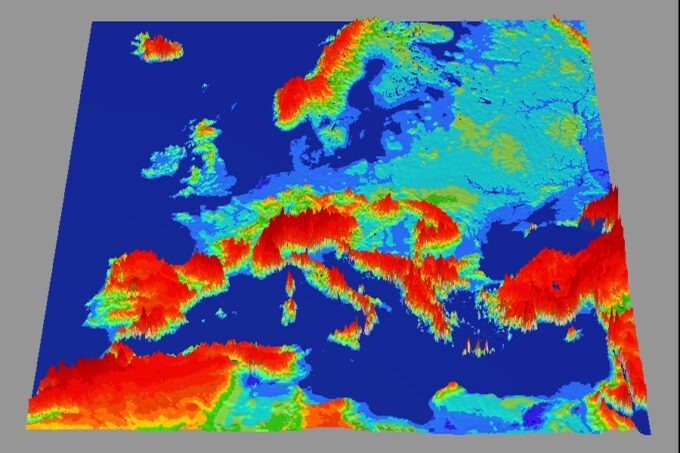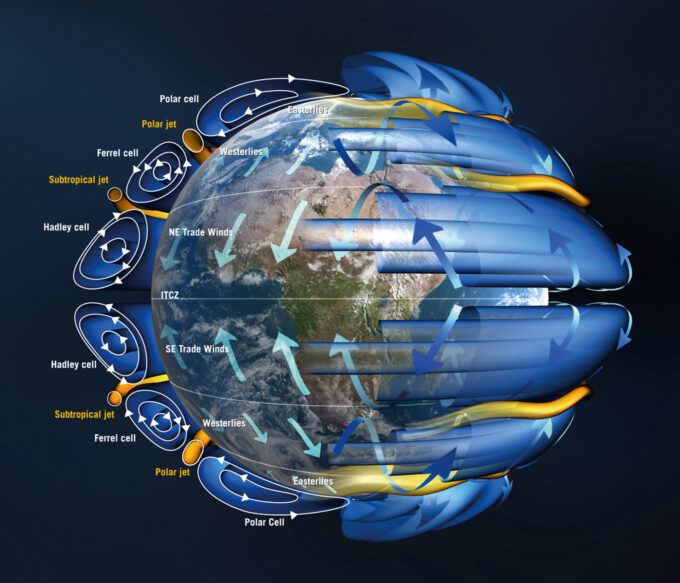Weather forecasts have improved a lot, they have become more reliable and accurate as compared to forecasts that were made a few years ago. The advancements will however continue to take place to make these forecasts more and more accurate. Although weather predictions have become much better than what they were earlier, some limitations affect the prediction.
How Early Can The Weather Be Predicted?
As of 2025, the degree of accuracy of weather prediction is pretty high for up to 5 days in advance. Some experts even believe that the technology that we have today can accurately predict weather 10 days in advance. But as mentioned above, there are limitations to predicting weather ahead of time.
There are obvious reasons for these limitations, there are several factors that affect the weather prediction and thus long term forecasting becomes challenging. The variables that affect the weather prediction can change in a short span and thus prediction becomes quite difficult.
In order to properly understand why long-term weather forecasting is nearly impossible, we will have to delve into some of the variables that change very quickly in the short term.
Reasons Why Weather Predictions Are Difficult
Long-term weather forecasting is seen as a challenging task. Here are some of the factors that affect weather prediction and make long-term weather prediction challenging.
-
Forecasting Models

Source: dwd.de
While choosing the forecast model, experts have to deal with the question of which model they want to believe and why they believe it to be more accurate than others. Two weather forecasting models are extremely popular among meteorologists. They are, namely, the American and European Weather Forecasting Models. You can check out various radar for the weather sites like weatherforyou.com to know the weather prediction for the next few days.
Both of these models involve a lot of current as well as historical weather data. Yet, these models are very different from each other in terms of the calculation involved.
When it comes to the European model it is seen as more accurate than the American model. However, both models predict very distinct weather conditions. Choosing the model ultimately depends on the meteorologist.
Every meteorologist has their own preferences when it comes to choosing the model. Thus, the model an expert chooses has a huge role in weather prediction, a selection of inaccurate models would severely affect the results.
-
Weather Keeps Changing
The atmosphere of the earth and weather system is naturally very unpredictable and chaotic. It would not be wrong to say that methodologists constantly strive to protect something that is by nature unpredictable.
The technology has evolved vastly, now we have not only more but better weather satellites that have advanced sensors. Today experts have access to all sorts of current as well as historical climate data, there are computers that can perform all the hectic calculations for us thereby making climate prediction more accurate. Yet, all of these advancements are not capable of forecasting sudden changes in the atmosphere.
-
Temperature
One of the most important variables that affect climate prediction is temperature. Temperature alone can change the climate in a short span. As a layman, we are practically unaware of the influence that Temperature has on the climate system.
There are hundreds of unpredictable things that can affect the climate around us in no time. For instance, a solar flare miles away from the earth can raise the ocean by some degree. This might seem insignificant to you but it can change the climate completely. It might make the climate conditions of the affected region more intense and severe.
There are hundreds of other things that can affect the climate and can hence change the climate forecast of the region completely. Thus, the temperature is an unpredictable variable that has a key role in determining the climate making long term climate forecasting almost impossible.
-
Wind Or Air Movement

Source: esa.int
Another important variable in climate prediction is wind or air movement. Wind to a great extent is affected by temperature. Just like a little change in temperature can completely change the climate of any region, air movements also can affect the climate system very easily.
Wind patterns are also quite unpredictable and have a significant influence on the climate system. Air movements can change at the convergence of land and ocean, and onshore or offshore wind can change which can change the climate conditions on the ocean and the nearby land area as well.
In the worst-case scenario, heat on the surface of ocean water can lead to tropical depression which can fuel the tropical storm and even a hurricane because of a rapid increase in the speed of the wind.
All of these events are very unpredictable and yet they all affect the climate conditions in some way or the other. Therefore climate prediction becomes very challenging for experts especially long term climate predictions like 3 months or 6 months climate predictions. Although this article discusses only a handful of variables, there are many other variables and factors that affect predictions.
Clearly, climate prediction is not an easy task. A simple climate prediction system takes thousands of data into consideration, from various climate stations across the globe. Historical and current data are combined only to receive surprising predictions that are not one hundred percent accurate. Does this happen because of the meteorologists’ fault? Do they do something wrong? The answer to this question is No! It is the unpredictable nature of climate that makes predictions so difficult. However, we have come a long way when it comes to climate forecasts and things are only improving. Maybe in the next few years, we will be able to make accurate predictions up to 30 days in advance.
Conclusion
Making hundred percent accurate predictions about far ahead in time is quite challenging. Forecasting climate 90 days in advance or even a month in advance is quite risky with current technology. With technological advances, we can expect more accuracy when it comes to long term climate predictions.







